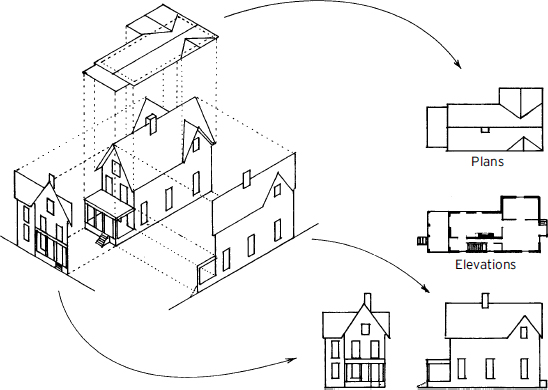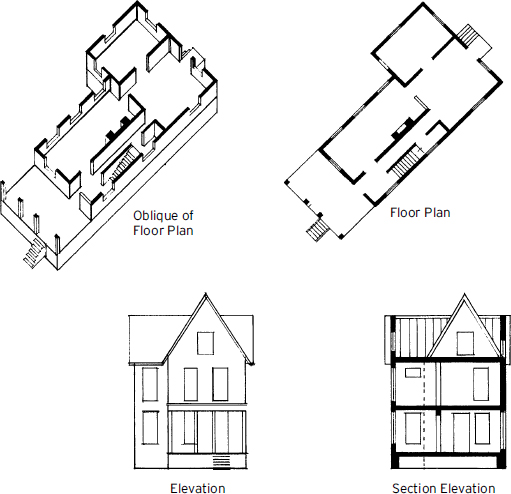3
PLANS, ELEVATIONS, AND PARALINE PROJECTIONS
Before attempting to construct perspective views, it is worth reviewing how plans and elevations are derived.
Imagine the top and sides of an object (a house in this case) pushed up and out against a flat plane.
The views from above are called plans. The views from the sides are called elevations.

While the plan gives a view looking down on top of an object, it is often useful to slice a plane through the object to reveal important information.
In architectural drawings, for example, the plan is set up off the floor high enough to cut through and reveal windows and other important features.

In the same way, elevations, or sections, may be sliced vertically through the middle of objects in order to reveal interior arrangements.
Complex objects such as large buildings may require large numbers of such plans, elevations, and sections.
Complex curved objects, such as boats and airplanes, require even more elaborate methods of representation.
The principles remain the same, but the objects must be sliced at numerous intervals in order to mark off reference points for the curving lines.
Here, the simple plan and elevations of a canoe have been subdivided into a series of parallel and intersecting planes.
PARALINE DRAWING
Without resorting ...
Get Basic Perspective Drawing: A Visual Approach, 5th Edition now with the O’Reilly learning platform.
O’Reilly members experience books, live events, courses curated by job role, and more from O’Reilly and nearly 200 top publishers.

